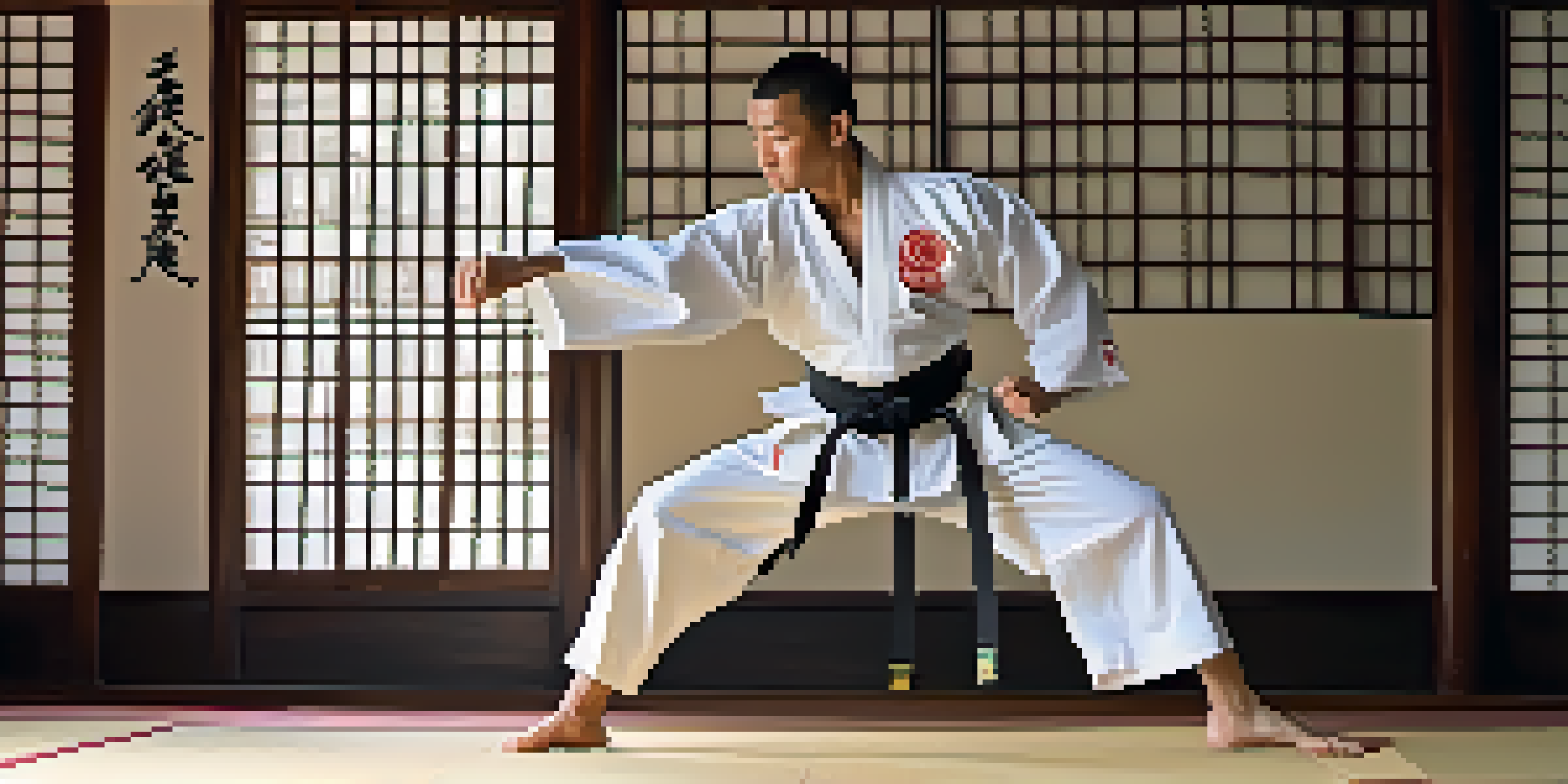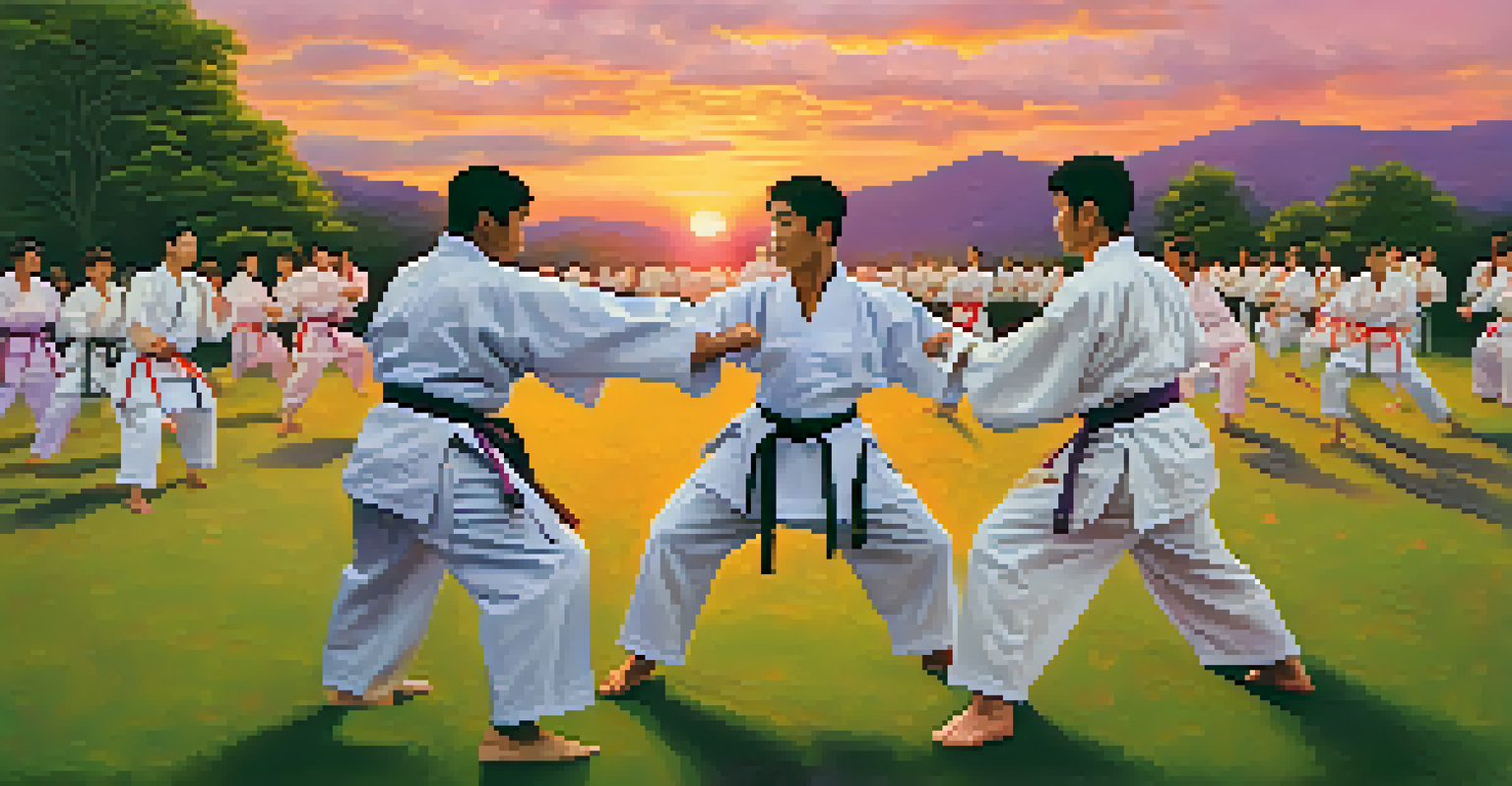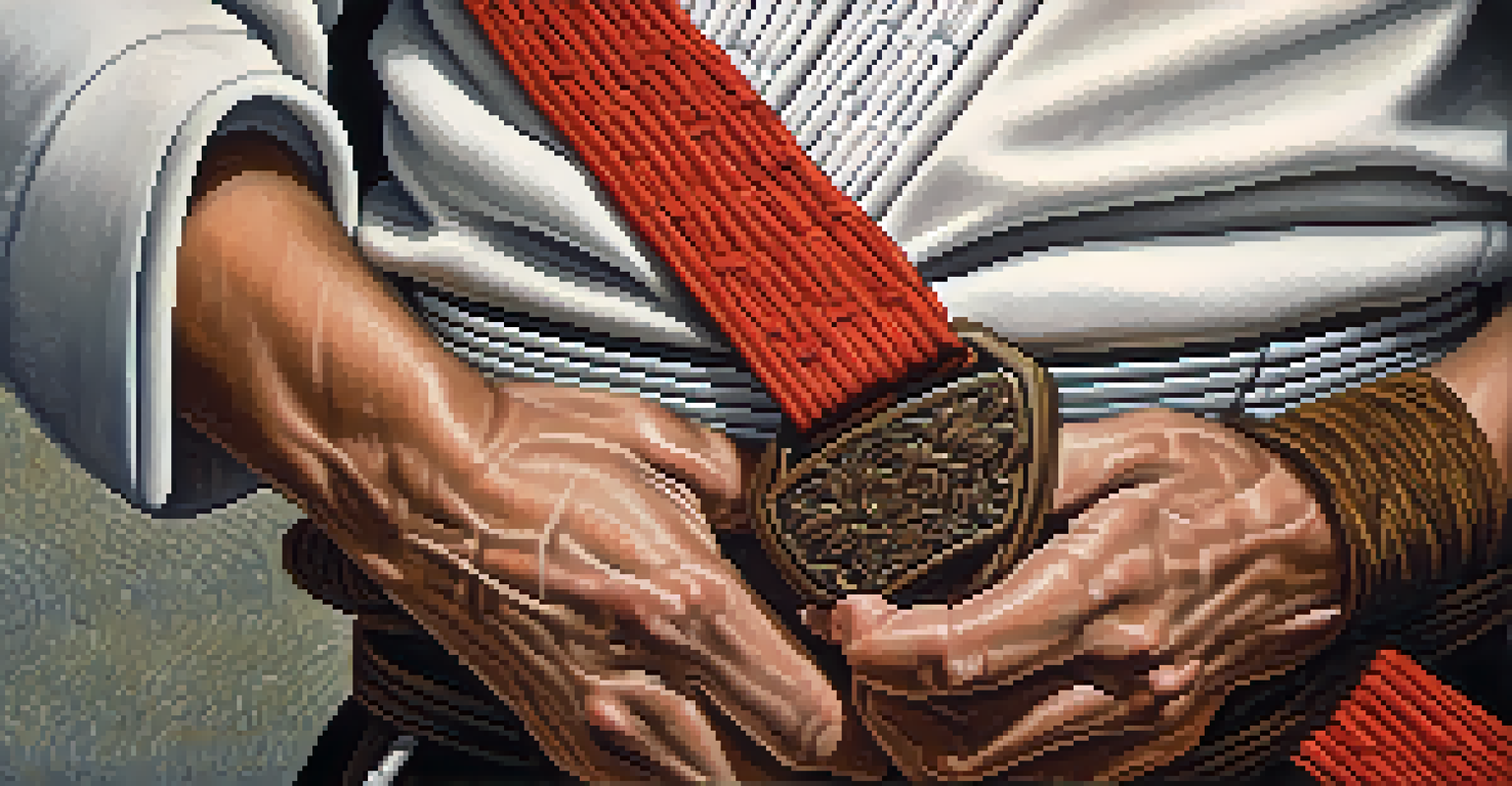Chojun Miyagi and the Development of Goju-Ryu Karate

Who Was Chojun Miyagi? A Brief Biography
Chojun Miyagi was born in 1888 in Okinawa, Japan, and is best known as the founder of Goju-Ryu Karate. Growing up in a region rich in martial arts tradition, he began his training at a young age, influenced by both traditional Okinawan styles and Chinese martial arts. His dedication to mastering these systems laid the groundwork for his future contributions to karate.
The ultimate aim of the martial arts is not having to use them.
Miyagi was not just a martial artist; he was also a teacher. He believed in sharing knowledge and fostering discipline among his students, which helped him build a legacy that would endure long after his passing in 1953. His approach combined physical training with a philosophical understanding of martial arts, emphasizing the importance of mental discipline in addition to physical prowess.
Throughout his life, Miyagi sought to refine and systematize his martial arts practice. This pursuit of excellence led him to travel extensively, studying under various masters and integrating their techniques into his own style. As he evolved as a martial artist, he began to formalize what would become known as Goju-Ryu Karate.
The Roots of Goju-Ryu Karate
Goju-Ryu, which translates to 'hard-soft style,' reflects the duality of power and gentleness in martial arts. This concept is rooted in the philosophy that effective fighting requires a balance between strong, aggressive techniques and soft, fluid movements. Miyagi recognized this balance in both physical combat and life, which became a cornerstone of his teachings.

The style itself incorporates elements from both Okinawan and Chinese martial arts, showcasing techniques such as hard strikes and soft, circular movements. The name 'Goju-Ryu' encapsulates this blend, as practitioners learn to switch between hard and soft techniques depending on the situation. This adaptability is one of the key reasons why Goju-Ryu has remained popular and relevant.
Chojun Miyagi's Martial Arts Legacy
Chojun Miyagi founded Goju-Ryu Karate, emphasizing a balance of physical prowess and mental discipline.
Miyagi’s emphasis on breathing techniques and kata (forms) also set Goju-Ryu apart from other martial arts. Kata serves as a method for training and mastering techniques in a choreographed manner, allowing practitioners to develop not only their physical skills but also their mental focus and strategic thinking.
Miyagi's Influences: Chinese Martial Arts
One of the most significant influences on Chojun Miyagi's development of Goju-Ryu was Chinese martial arts, particularly the Southern Chinese styles. During his studies, he learned techniques that emphasized circular movements and fluidity, which he integrated into his own practice. This blending of styles not only enriched Goju-Ryu but also highlighted the importance of cross-cultural exchange in martial arts.
Martial arts is not about fighting; it's about building character.
Miyagi was particularly inspired by the teachings of the famous Chinese martial artist, Wu Shu. He adopted certain principles of Wu Shu, such as the focus on breathing and the connection between mind and body, which became fundamental aspects of Goju-Ryu. This integration showcases how Miyagi was not just a traditionalist but also an innovator who sought to evolve his art.
The influence of Chinese martial arts can still be seen in the training methods and techniques used by Goju-Ryu practitioners today. This legacy of learning and adaptation continues to inspire martial artists, encouraging them to explore various styles and philosophies to enhance their own practice.
The Philosophy Behind Goju-Ryu Karate
At the heart of Goju-Ryu Karate lies a profound philosophy that transcends mere physical combat. Miyagi believed that martial arts should cultivate both the body and the spirit, promoting harmony and balance in life. This holistic approach encourages practitioners to seek personal growth and self-discipline, making it as much about character development as about fighting skills.
One key aspect of this philosophy is the concept of 'Jita Kyoei,' which means 'mutual welfare and benefit.' This principle emphasizes that martial artists should not only strive for personal excellence but also support and uplift their peers. It fosters a sense of community and cooperation, which is often overlooked in competitive martial arts.
Goju-Ryu's Unique Philosophy
The philosophy of Goju-Ryu promotes personal growth, respect, and mutual welfare among practitioners.
Miyagi's teachings also stress the importance of respect, humility, and perseverance. These values are integral to Goju-Ryu and help practitioners navigate challenges both on and off the dojo floor. By embracing this philosophy, students of Goju-Ryu are better equipped to face life's adversities with confidence and grace.
The Training Regimen of Goju-Ryu Karate
Training in Goju-Ryu Karate involves a comprehensive regimen that encompasses various techniques, forms, and sparring. Practitioners begin with basic movements and gradually progress to more complex techniques, ensuring a solid foundation before advancing. This structured approach enables students to develop their skills at a pace that suits their individual learning styles.
Kata, or forms, play a crucial role in training, serving as a method for practicing techniques in a controlled environment. Each kata has its own unique movements and applications, allowing students to internalize the principles of Goju-Ryu. Regular practice of kata not only refines physical skills but also enhances mental focus and discipline.
Sparring, or kumite, is another essential component of Goju-Ryu training. It allows practitioners to apply their techniques in a dynamic setting, testing their skills against an opponent. This practice helps develop timing, distance, and adaptability, preparing students for real-world situations while reinforcing the importance of sportsmanship and mutual respect.
Legacy of Chojun Miyagi and Goju-Ryu
Chojun Miyagi's legacy extends far beyond his lifetime, as he established a system that continues to thrive worldwide. Goju-Ryu Karate has evolved into one of the most prominent styles practiced globally, with numerous schools and practitioners dedicated to preserving his teachings. His emphasis on balance, respect, and personal growth resonates with students of all ages and backgrounds.
Many of Miyagi's students went on to become influential martial artists themselves, spreading Goju-Ryu across continents. Their dedication to teaching and promoting the style has helped it gain recognition in both martial arts communities and popular culture. As Goju-Ryu continues to grow, it remains rooted in the principles laid down by Miyagi.
Training Methods in Goju-Ryu
Training includes kata and kumite, which help students develop skills, mental focus, and adaptability.
Today, Miyagi's influence can be seen in various aspects of martial arts, from competitive tournaments to self-defense classes. His teachings remind us that martial arts is not just about physical prowess; it's also about fostering character, respect, and community. The enduring impact of Chojun Miyagi serves as a testament to the timeless nature of his philosophy and the art of Goju-Ryu.
How to Get Started with Goju-Ryu Karate
If you're interested in exploring Goju-Ryu Karate, the first step is to find a local dojo or martial arts school that offers classes. Many dojos welcome beginners, providing a supportive environment to learn the basics. Don't be afraid to ask questions or express your interests; instructors are usually eager to share their knowledge and help newcomers feel comfortable.
As you begin your journey, focus on the fundamentals, including stances, strikes, and kata. Remember that martial arts is a personal journey, and progress may vary from one individual to another. Embrace each step of the learning process, and celebrate your achievements, no matter how small.

Lastly, immerse yourself in the philosophy of Goju-Ryu. Read about Chojun Miyagi and the principles of martial arts to deepen your understanding. This holistic approach will not only enhance your skills but also enrich your experience as you grow both as a martial artist and as an individual.